My blog posts from our Britain and Belgium trip continue, but it wouldn’t be one of my holidays if I didn’t geek out on transport-related stuff.
So here’s a post on the vagaries of rail fares in Britain… or at least, what you need to know as a tourist.
Buying rail tickets at home in Victoria is easy. For most trips you don’t even buy a separate ticket, you just use a Myki card for any trip in Melbourne and as far out as the “commuter belt” cities of Geelong, Ballarat, Bendigo, Seymour and Traralgon, and local buses and trams are included in the price.
Further afield you book a ticket with V/Line. There are some exceptions: a fare on the XPT has to be bought from NSW Trainlink, though V/Line can sell you a ticket on Great Southern Rail’s Overland for a trip within Victoria. For most of the longer trips, there’s peak and off-peak, that’s it. First Class applies on some trips, as a simple surcharge on top of the regular fare.
Britain: a bigger, more complex network
As we found during our holiday, the UK has a lot more rail operators, and a lot more ticket types.
But then, it is a much more complex and extensive network. The UK rail system is made up of dozens of operators right across the country, branded collectively as National Rail, and using the old British Rail logo, first devised in 1965.
(Urban rail systems such as London Underground and others are separate, though there is some fare integration, as some of the National Rail services double as commuter/local lines within London and other cities.)
Shared infrastructure
The many operators share tracks in many cases, as well as stations – each station has a single operator managing it on behalf of the various operators serving it.
They also share a common ticketing system (with distinctive orange tickets with magnetic stripes), and fare gates, which are installed at most stations of any significant size. (If the Brits were running V/Line, they’d have fare gates installed at all the busiest regional stations.)
The fares are a bit confusing at first.
I studied the options, as I’d shelled out for not-very-cheap airfares. (Australian school holidays + European summer = A$2500 each Melbourne to London and return, and this is unintentionally turning into a big-spending year. So I was feeling pretty budget-conscious.)
Fare pricing is set by the individual operators, and initially it seems a bit like airline pricing, though in fact it’s not quite as complicated.
On routes run by multiple operators, the main one (“the lead operator“) sets the prices, which then applies to all other trains on the same route.
Britrail passes
Overseas tourists visiting Britain can get Britrail passes, covering various areas or the whole country.
There are also various other passes available to locals and visitors alike.
The passes are not cheap though, and I worked out that based on our plans, we wouldn’t save any money (and it might be more expensive) over buying individual tickets, provided most of our trips were off-peak.
Three types of tickets
The marvellous Seat61 website has a lot of detail, but it comes down to three basic types of fares:
Anytime – in other words, including peak times. Very expensive in some cases. Some commuter routes get so busy that they’ll charge through the nose to try and convince you to catch other services. (Regular commuters tend to buy season tickets covering these trips.)
Off-peak – pretty self-explanatory. Flexible in terms of which train you can catch, provided it’s outside peak times. (Some operators have another tier called Super Off-peak, which is any train at specific times. As we found out, on some routes, this doesn’t automatically mean the trains aren’t busy.)
Advance – bought before the day of travel. Discounted, but inflexible, as you’re tied to a specific train (which also means a specific operator), and you can’t get a refund or even change it after you’ve booked. Not necessarily available for all trains – unlike the other types of fare, it’s up to the individual operator to decide how many tickets to make available, and at what price.
Some routes offer first class seating, for which you’ll obviously pay a higher fare. We didn’t opt for this. Standard Class was pretty good. The only exception was a couple of trains that were very crowded, but they were shorter trains that didn’t have first class seats anyway.
Example pricing from Taunton to Penzance:
- Anytime single £70.50
- Off-peak single £47.30
- Open (off-peak) return £59.10
- Advance single £19.50 to £31.70, depending on the train
- First Class anytime single £163.00
For most journeys during our holiday, it made no sense to buy Advance tickets. In most cases we knew where we’d want to be going, and which day, but I didn’t want us to be tied to a specific train. That’s a path to a no-fun holiday, especially remembering that most trains on the lines we were using are every half-hour, or even more frequent. “No, we can’t catch that one. We have to sit here for another 30 minutes until our train comes.”
The only exception, where booking in advance and reserving a spot was useful for us, was the sleeper train from Penzance to London – because we knew which night we were catching it, and there was only one train to choose from, and it guaranteed a berth.
(We also booked in advance for Eurostar, but that’s a different kettle of fish entirely, more like booking airline tickets.)
So, did avoiding Advance tickets mean we missed out on the cheapest fares? Actually, mostly not. Because we were travelling always in a group of four, and almost all our trips were on Great Western Railway, we were able to make use of GWR’s GroupSave discount… not all operators have it, but on those that do, for groups of 3-9 people, it reduces prices by a third, bringing normal Off-Peak fares down to about the same price as Advance fares.
Single vs Return
Return tickets (including “open return”, where you come back on a different day) are usually only a bit more expensive than a single fare. The return trip isn’t tied to a specific train, though it may exclude peak times.
For our trip it was almost all single fares, but it’s useful if you’re doing some backtracking.
Multi-operator trips
While all train operators sell tickets for all the other operators, and they share ticketing infrastructure so that for instance all tickets work in all fare gates, the fares themselves are often not integrated.
If your journey includes two “lead” operators, it appears you’ll pay the cost of the two individual legs, simply added together. This makes it more expensive than if both legs were on one operator. As with local buses, I would expect this is a disincentive to use the trains for some trips.
Speaking of buses, there is some fare integration, with a scheme called PlusBus which gets you a discounted local bus pass with your train ticket. For trips to London you can also get a discounted London Travelcard. Both of these only apply on the same day as your train trip.
How to buy
Buying fares online is possible, and you can then collect the tickets at a vending machine – a good option for tourists. One limitation of this is won’t let you buy online less than an hour before the train is due.
All the train operator web sites will sell you a ticket, including for any other operator. There are other web sites that have extra smarts for looking for cheap deals, but some of them also add small surcharges.
You can also buy tickets at the vending machines of course. A downside of this is that most of the machines can’t handle the GroupSave deal.
So in most cases I ended up buying tickets just before travel, from the booking office – which is something you’d think they’d want to discourage, but for us it was the easiest way. (To be fair, they’re upgrading the vending machines to handle GroupSave.)
To their credit, the operators of the stations involved always seemed to have plenty of staff in the booking offices. I never waited more than a couple of minutes, and the people on duty were all very helpful – and knew about the GroupSave discount, even at Cardiff Station which is run by a different Train Operating Company (Arriva) than the one we were booking for (GWR), though Arriva have a similar deal with a different name (Small Group Day Ticket).
One side effect of GroupSave only being valid on certain operators: in some cases you can only catch a train run by that operator. We did a trip from Bath to Taunton (via Bristol Temple Meads). The discount was only valid on GWR trains, not other trains on that route run by CrossCountry.
A to B, B to C
Still reading? Okay. Finally, here’s a neat moneysaver.
Seat61 notes that in some cases it’s cheaper to buy two tickets for a single trip. It’s a quirk of the pricing system.
In most cases I didn’t look into this option, but I did check for one trip from Taunton to Penzance, which involved changing trains along the way at either Par or Exeter St David’s. It turned out to be quite a bit cheaper to buy separate tickets for each leg of the trip.
This we did by exiting the station at Exeter, buying fresh tickets and then going back in again. But if you have bought the tickets in advance, there’s no need to even do that. In fact you don’t even need to hop off the train; you just need to be on a train that stops at the relevant station.
Apart from buying the second lot of tickets, we were also able to use the 20ish minutes at Exeter to buy some lunch, though we didn’t venture out of the station as it was pouring with rain at the time.
How much did we save?
- Taunton to Penzance is £31.20 each, if you include the GroupSave discount (change at Par or Exeter St David’s. Some combinations of trains were up to £47.30 each)
- Taunton to Exeter St David’s £7.75 each + Exeter St David’s to Penzance £13.85 each = total £21.60 (includes the GroupSave discount)
So in our case, booking the full trip for the four of us would have been £124.80 total including GroupSave. Buying it in two parts ended up costing us £86.40 total. A saving of £38.40, or about A$62, about 30% of the fare. And we got to step outside the station gates and buy sandwiches, which I believe we technically couldn’t have done if making the trip on one ticket.
Worth our while.
Would we want this complexity here?
You can see some advantages to the British way of doing things. Cheap advance discount fares encourages patronage and gives the operators some certainty over who will turn up. GroupSave and other discount schemes make it more affordable for groups to use public transport.
But it is quite complicated for passengers to understand. And return tickets only being slightly more expensive than singles, well that’s a bit odd given it costs a rail company twice as much to carry you on two trips.
And UK pricing is completely illogical in some cases — in part thanks to the myriad of operators all applying their own commercial decisions to their pricing.
We’ve got our quirks too of course, but the key is keeping it simple for passengers, and ensuring that there’s a good return to operators (and government) as extra services are added, to encourage further investment.


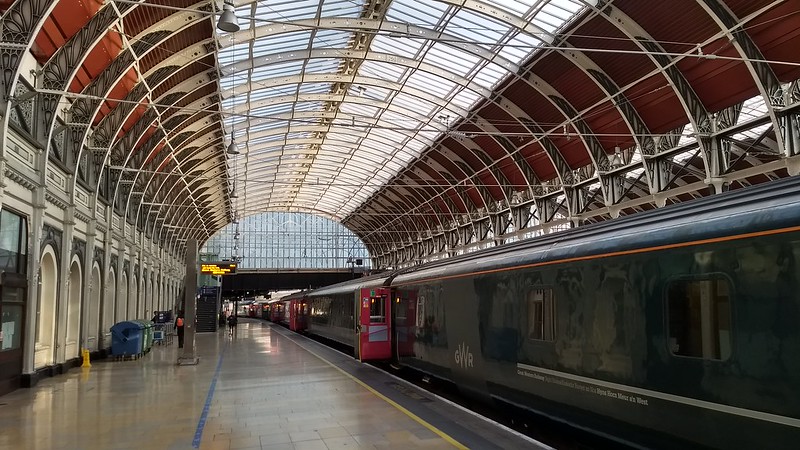
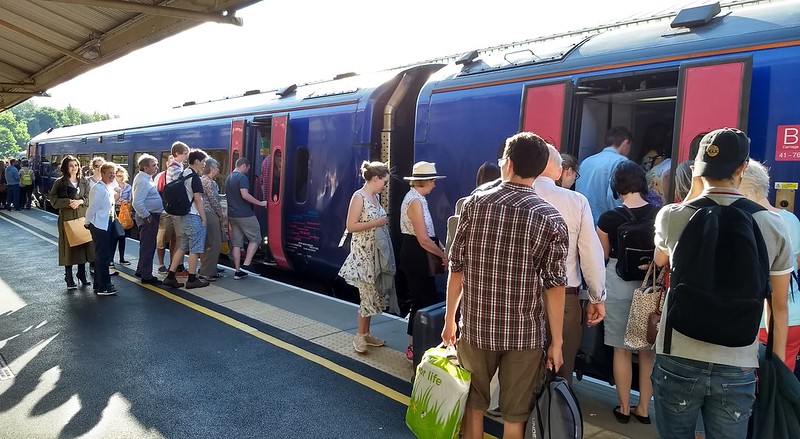
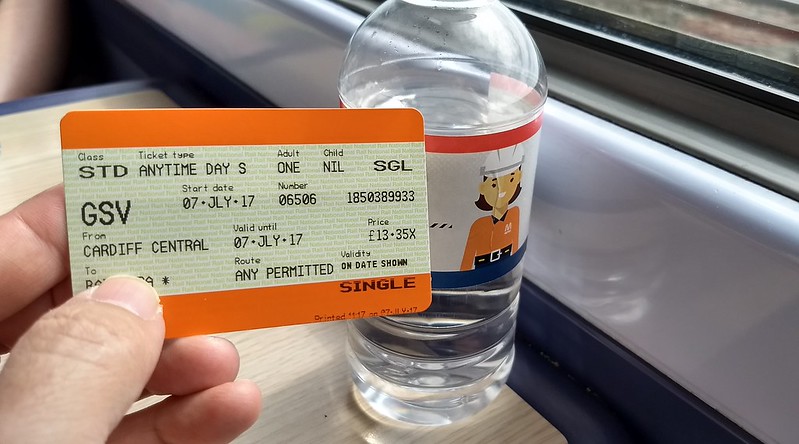
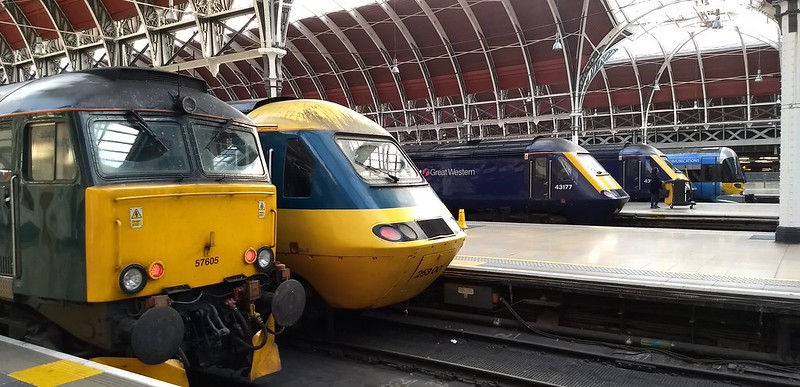
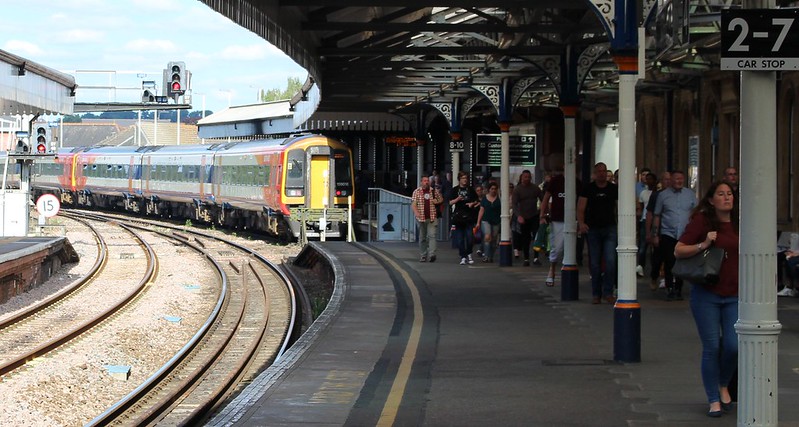

9 replies on “What I learnt about UK rail fares”
A fascinating article. While UK ticketing sounds complex, did you get a sense of what the locals thought of it?
Slightly off topic – it sounds like hiring a car would be the most convenient (and cheapest?) option for a family of four wanting to go outside main towns (eg national parks and coastline) in the UK?
I appreciate that you wanted to “geek out” on trains, which sounds fantastic.
Love your work! Seat61 is a great resource, and I completely understand that on your holiday you didn’t want to be tied down to a specific train. However if money is a focus, when I lived in the UK a lot of the confusion was explained and solved though a very useful website, http://www.moneysavingexpert.com/travel/cheap-train-tickets.
From what I understand it is possible to break a journey on most UK rail tickets without penalty. So you could pop out to get lunch between connecting trains if you had time.
Also you should check out the “All the Stations” YouTube channel, I’ve been really enjoying Geoff and Vicki’s three and a half month quest (sadly ending soon) to travel on trains stopping at every station in Great Britain.
As it happens, fare gates on National Rail only date from about 5 years ago. Prior to that, the system relied on manual checks, primarily by on-board conductors as we do on V/Line here. From what I gather the aim was the usual one of cost saving rather than increased compliance – people certainly jump the gates in the many places where there’s no supervision.
It’s an absurd system and impossible for any non expert to understand. Apparently you are not supposed to buy a train ticket to a specific station, which might be cheaper, and then get off a station or two sooner. I noticed that while first class on what is now Virgin Trains East Coast was quite good, it was pretty ordinary on the TransPennine Express and hardly worth paying the extra.
@Roger, with all the mucking about booking and collecting a car (car hire places were pretty scarce in city centres where we were mostly staying) I don’t think car hire would have been more convenient unless we’d been making more excursions into rural areas.
@Tony, there were on-board ticket checks too, at least on some of the trains. This seemed very consistent on the longer routes operated by High Speed Trains, but more patchy on the routes run by smaller trains eg 3 carriage Diesel Multiple Units.
Geelong to Melbourne – cheaper to break the journey at Lara (and wait 20 minutes for the next train) and pay Zone 4 and Zone 1/2 (=1) separately, or at Sunshine (exit the barriers and re-enter, and change to Metro) and pay Zones 2/3/4 and Zone 1/2 (=1) separately. I imagine it would be the same for other regional lines?
Okay, some thoughts from a “living in the UK and using this system all the time” perspective.
the first thing to say is that – although an overall description like this *sounds* fearsomely complex, it’s not always like that for any given journey. Indeed, most journeys will give passengers a “choice” of one operator and tickets whose prices vary depending on how far ahead you book and what time of day you want to travel. In this sense, it’s more like what airlines have done for years.
Some journeys, though, offer more choice and I – living in the Birmingham area but often having to work in London – have a choice of three operators on two lines. To that end, I can often “play” the system. if i go with london Midland I can sometimes get a one way fare of GBP6, which is astonishingly good value for a 190km journey. The down side is it’ll stop at every station and can actually take longer than the parallel coach (bus) journey at more than 2h30m. I’ve done it once.
The fastest service is about 75 minutes, by Virgin. There I’ve had two singles for about GBP 12 – GBP16 each way when lucky. I once even found First Class tickets for a bit less than standard class! They include a free seat reservation, too, which is handy as these services are frequently very busy. More usually though it’s about GBP 20 each way and if i chose to travel in peak hours we can get into three figure sums, which my business (I’m self-employed) can’t swallow.
The third service – on a different line – is provided by Chiltern trains. This is one of the big success stories of rail privatisation, having started a new service along formerly underused lines but which has now grown to be faster and more frequent to the point where it is often the “default option” for me. Yuo can at less busy times get tickets for GBP 10 each way on this if lucky. But their Super Off Peak return at GBP29.50 is usually the best value. (In fact, I’m using that tomorrow, having had a trawl through the Virgin offerings. They were coming in at about GBP32 – 35, so there wasn’t much in it.)
The reason for this long explanation is that it’s not possible to say the system in “good” or “bad”; just more “it depends”.
If we didn’t have the freedom of the privatised network, I know deep down that the fares would probably be simpler and that would be the end of those sometimes very cheap offers. Similarly, it was a private company that had the creativity to “invent” what became the Chiltern service in the first place. But that same “entrepreneurial spirit” is what encouraged Virgin to think of their trains and “planes on wheels”. That might appeal to some but to me it makes them feel cramped and full of plastic.
Another issue is that the fragmented nature of the network allows different organisations to blame one another for failings. Delays and diversions are “blamed” on Network Rail (the public holding company for the track and signalling), failings at stations are blamed on another train company if they operate it and so on.
Other individual observations to what you’ve said:
Some of the largest and busiest stations, shared by several operators, are actually managed by Network Rail itself, rather than one of the train companies.
Britrail passes are seldom good value unless you’re doing a *lot* of rail travelling. But they are *simple* and if you don’t want to play the online fares game and go for simplicity they make some sense. there are also various Rover tickets available to anyone, even UK residents!
As well as the Anytime/Off-peak/Advance tickets, the operators can also put in their own special offers and do from time to time.
The various GroupSave discounts are excellent value and very little known.
The small (and sometimes non-existent!) difference between single and return fares has long been a feature of rail travel in Britain. so much so I’m always mildly surprised to find that overseas out and back can sometimes cost two single journeys, although with the special offers that’s becoming the case here, too.
“If your journey includes two ‘lead’ operators, it appears you’ll pay the cost of the two individual legs, simply added together.” if that is indeed the case, I’d never noticed it! But living in the centre of the country, most of my journeys are by just one operator, so maybe I wouldn’t?
PlusBus is like GroupSave: a great idea, little known. it can sometimes be hard work getting bus drivers to accept the bloody things, too. I carry the leaflet around with me “just in case”!
Splitting of fares is bizarre and I can’t understand why there are still cheaper A-c by buying A-B and B-C tickets. And having cheaper tickets for longer journeys and not being allowed to leave at stations earlier might equally be odd but is very much against the rules. I understand it’s punishable by transportation for life to Van Diemen’s Land.
Although complex, there’s no denying that the system is very VERY busy. It carries more passengers now than since the 1920s, when the network was much higher. the controversy about whether we need a High Speed Network overlooks thew fact that it’s more about adding capacity than speed per se. The media struggle with that, though!
My one lasting memory of trying to catch trains in the UK was that some days it was cheaper to buy a “day return” ticket to some towns and only use one half of it than to try and get the cheapest one way/one person fare! Even the station staff agreed. Perhaps the intervening ten years or travelling in your group of four simplified this, but I found the ticketing and fares horrendous and incomrephensible in the early 2000’s.